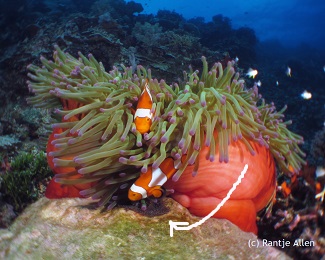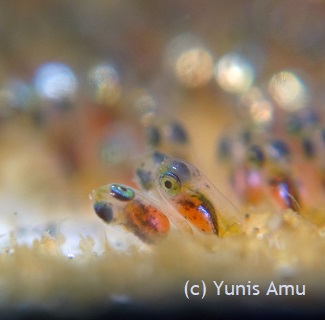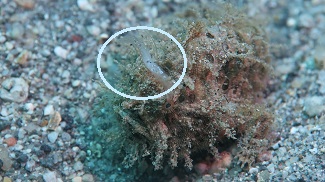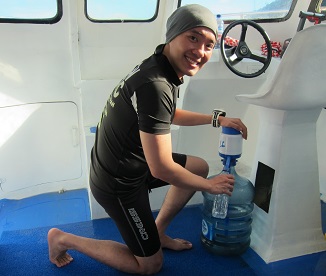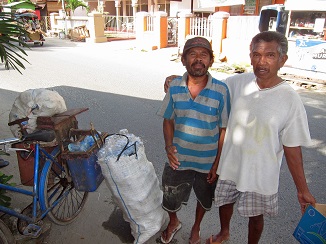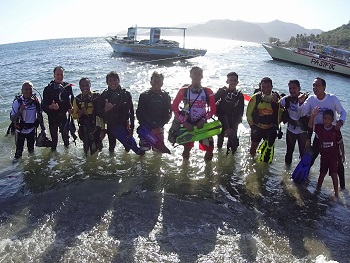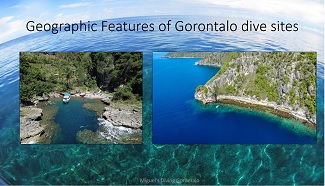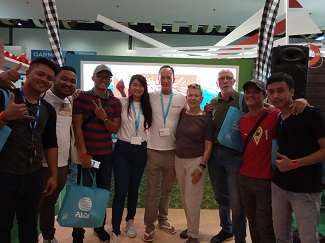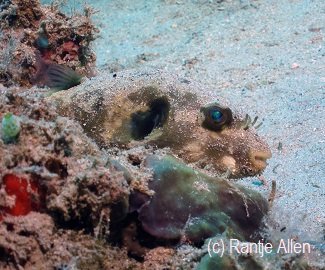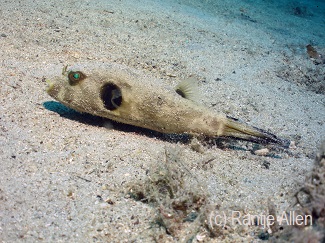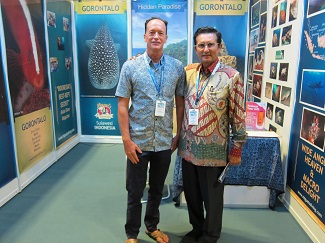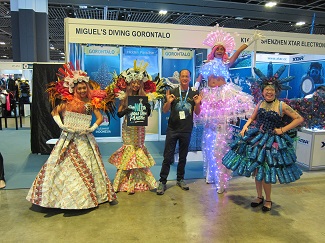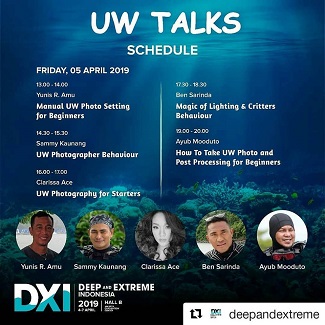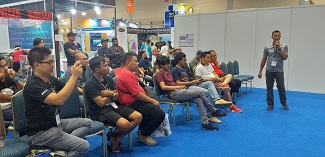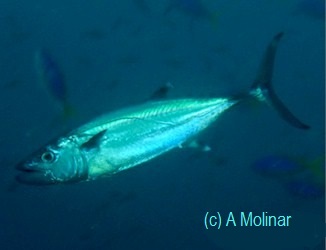Loading content - please wait...
New clingfish species thrives in Gorontalo
New clingfish species thrives in Gorontalo’s biologically rich waters. Unlike the usual Crinoid clingfish, the new species lacks the central stripe down its head and dorsal fin.
Crinoid clingfish
Careful divers can search for clingfish in the central areas of certain crinoids. Crinoids are also called feather stars. Clingfish prefer Comanthus bennetti for hosts. The usual species found there is named Discotrema crinophilum. Crinophilum means “friend of crinoid.” Its common name is Crinoid clingfish. It has a thick white to yellow line around its entire body. More importantly, it has a central stripe from its head down its back. Originally, its name was D. crinophila, but that was corrected.
New clingfish species
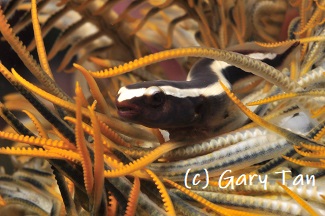
Dr. John E. Randall was photographing various crinoid clingfish in Papua New Guinea and Indonesia. He also collected some specimens. During this expedition
, he noticed a color variation. His research partner, Dr. Matthew T. Craig, used DNA sequence data to investigate. With this data, the team proved that the clingfish with the different color pattern was a new species.The new clingfish species Discotrema monogrammum lacks the stripe down the back. It only has the single lateral stripe around its body. Hence, it is named monogrammum. Its common name would be Oneline clingfish.
Additionally, Crinoid clingfish have a pectoral fin ray count of 25 to 28. However, the new clingfish species has only 23 to 25. Moreover, the Oneline clingfish has one or two less vertebrae than the Crinoid clingfish. All these confirm the new clingfish species.
Scientists confirm only three species of Discotrema clingfishes. Research on D. crinophilum was in 1976. The team of Craig & Randall completed research on D. monogrammum in 2008. Additionally, they discovered another new clingfish species in Fiji.
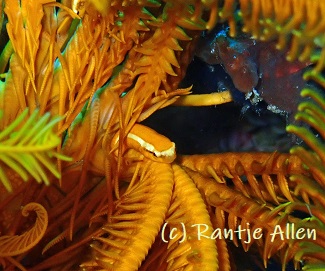
Research and underwater photographs confirm the distribution of the Oneline clingfish. Primarily, it lives in Indonesia, the Philippines, Papua New Guinea and the Great Barrier Reef. Also, it lives around Christmas Island in the Indian Ocean.
A tiny fish that clings
Clingfishes have a sucking disc on their belly. That disc consists of modified pelvic fins and folds of skin. Also, they have no scales. Instead, a heavy mucus covers their skin. That mucus is usually toxic. In total, clingfishes comprise 36 genera and 151 species. As noted, there are only three species in the Discotrema genus. That includes the new clingfish species D. monogrammum. The maximum size of these clingfishes is about three centimeters.
For your chance to see one of these tiny treasures, please book you dive trip with us.





